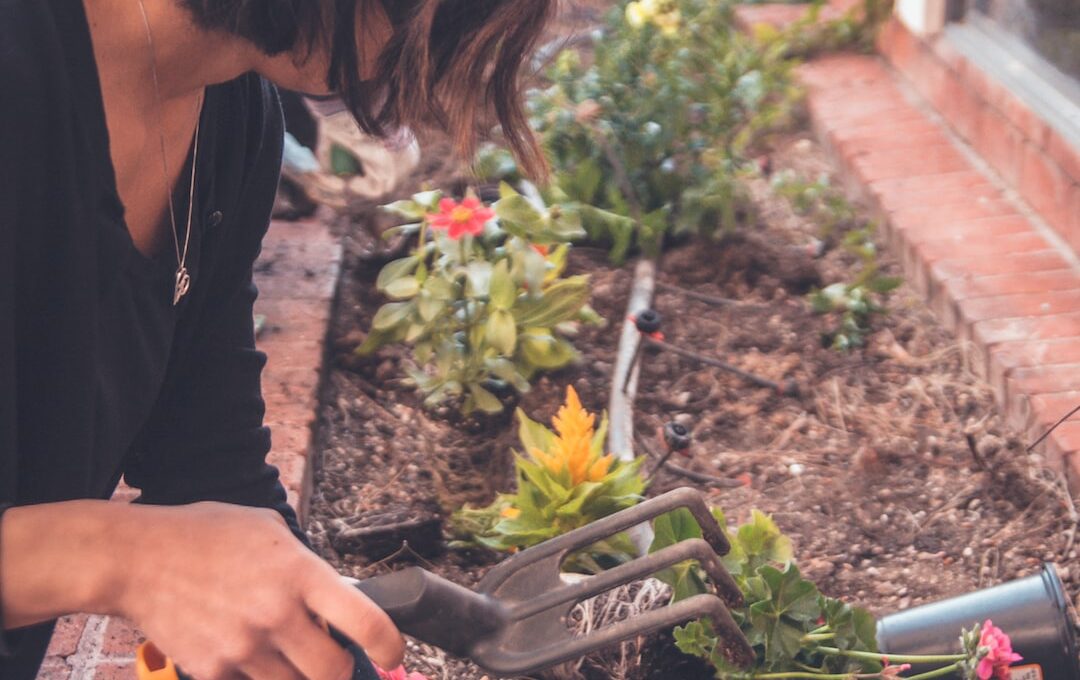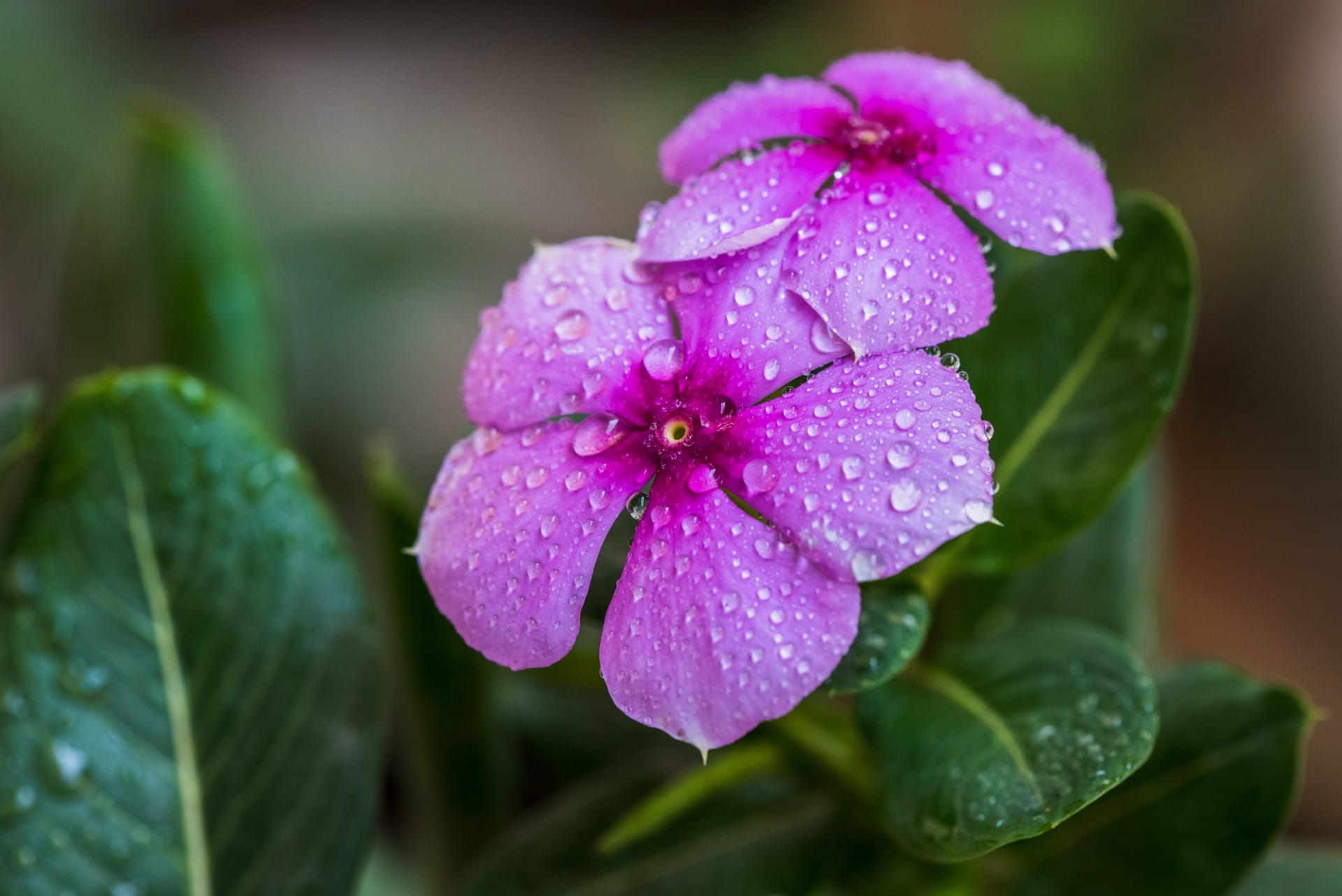Are you wondering how often you should water your lantana plants to keep them healthy and thriving?
Proper watering is crucial for the well-being of your lantana, as it helps maintain their vibrant colors and lush foliage. In this article, we will guide you on the best practices for watering lantana, taking into account various factors that affect their water needs.
Understanding lantana’s watering needs is essential for promoting their growth and preventing any water-related issues. We will explore signs of both underwatering and overwatering, so you can adjust your watering routine accordingly.
Additionally, we will discuss adjusting watering based on lantana’s growth stage, as their water requirements may change as they develop.
By following our expert tips and avoiding common mistakes, you can ensure that your lantana plants receive the right amount of water they need to flourish. Stay tuned to troubleshoot any watering issues and learn additional tips for maintaining your lantana’s health.
Let’s keep your lantana thriving with proper watering techniques!
Quick Summary
- Proper watering is crucial for the well-being of lantana plants
- Factors to consider when watering lantana include climate, soil type, and growth stage
- Lantanas prefer well-draining soil and may require more frequent watering during hotter months
- Adjust watering based on lantana’s growth stage: more water during active growing season, less water during dormant season
Understanding Lantana’s Watering Needs
Want to know how often you should water your lantana? Understanding Lantana’s watering needs is crucial in ensuring the health and longevity of this vibrant plant.
Lantanas are drought-tolerant plants, but they still require regular watering to thrive. Establishing a proper watering schedule is essential to prevent overwatering or underwatering.
To determine the ideal watering schedule for your lantana, consider the climate, soil type, and the plant’s growth stage. In general, lantanas prefer well-draining soil, so make sure the water doesn’t sit around the roots for too long. During the hotter months, when lantanas are actively growing and blooming, they may require more frequent watering. Aim to water the plants deeply once or twice a week, allowing the water to penetrate the root zone.
When it comes to watering methods, using a soaker hose or drip irrigation system is ideal. These methods deliver water directly to the root zone, minimizing evaporation and water waste. Avoid overhead watering, as it can lead to foliage diseases.
Remember, it’s always better to underwater than overwater lantanas. These resilient plants can tolerate short periods of drought but are highly susceptible to root rot caused by excessive moisture. By understanding their watering needs and following a consistent watering schedule, you can ensure your lantanas thrive and provide you with beautiful blooms throughout the season.
Factors to Consider When Watering Lantana
When it comes to watering your lantana, there are a few factors you need to consider. First, take into account the climate and temperature in your area. This will determine how often you need to water your lantana.
Second, consider the type of soil you have and its drainage capabilities. Well-draining soil is essential for lantana’s health and growth.
Climate and Temperature
To keep your lantana thriving, you should regularly water it according to the climate and temperature of your region. The watering frequency and water requirements of lantana largely depend on the climate and temperature conditions it is exposed to. In regions with hot and dry climates, lantana needs more frequent watering to prevent dehydration. On the other hand, in regions with cooler and more humid climates, lantana requires less frequent watering as the moisture in the air helps to keep the plant hydrated. To help you determine the appropriate watering schedule for your lantana, refer to the table below:
| Climate/ Temperature | Watering Frequency | Water Requirements |
|---|---|---|
| Hot and Dry | Every 2-3 days | Regular watering |
| Moderate and Humid | Every 4-5 days | Less frequent watering |
By following these guidelines, you can ensure that your lantana gets the right amount of water it needs to thrive in your specific climate and temperature conditions.
Soil Type and Drainage
Having sandy or loamy soil with good drainage is essential for the healthy growth of your lantana. This type of soil allows excess water to flow away, preventing waterlogged roots that can lead to root rot and plant death.
To ensure your lantana thrives, make sure the soil pH ranges from 6.0 to 7.5, as lantanas prefer slightly acidic to neutral soil.
When it comes to watering, it’s important to establish a consistent watering schedule. Lantanas generally prefer to be watered deeply about once a week, allowing the top inch of soil to dry out between waterings. Be cautious not to overwater, as this can lead to root rot.
By providing your lantana with the right soil type and a proper watering schedule, you can ensure its safety and promote healthy growth.
Signs of Underwatering and Overwatering
If you don’t water your lantana enough, its leaves will start to wilt and turn yellow, creating a sad and thirsty appearance. Underwatering symptoms can be easily recognized when the top layer of soil feels dry to the touch. Other signs include drooping leaves, leaf curling, and slower growth. It is important to note that lantana is a drought-tolerant plant and can withstand short periods of dryness. However, prolonged underwatering can lead to serious complications.
On the other hand, overwatering can also harm your lantana. Overwatering complications can arise when the soil remains constantly wet, leading to root rot and fungal diseases. Signs of overwatering include yellowing leaves, mushy roots, and a foul smell coming from the soil. It is crucial to maintain a proper balance and avoid both underwatering and overwatering.
To help you determine the watering needs of your lantana, refer to the table below:
| Signs of Underwatering | Signs of Overwatering | Proper Watering |
|---|---|---|
| Wilting and yellow leaves | Yellowing and mushy roots | Water when topsoil is dry |
| Drooping leaves | Foul smell from soil | Allow soil to dry out |
| Leaf curling | between waterings |
By paying attention to these signs and following the proper watering guidelines, you can ensure the health and vibrant appearance of your lantana. Remember, it’s better to slightly underwater than to overwater this resilient plant.
Best Practices for Watering Lantana
When it comes to watering your lantana, there are a few best practices to keep in mind. First, consider the frequency of watering – lantana generally prefers to be watered deeply but infrequently, allowing the soil to dry out between waterings.
Second, be mindful of your watering technique – aim to water at the base of the plant, avoiding wetting the foliage as this can lead to disease.
Lastly, take into account the different seasons and adjust your watering accordingly, providing more water during hot, dry periods and less during cooler, wetter seasons.
Watering Frequency
Regularly watering lantana will ensure its optimal growth and vibrant blooms. To maintain a healthy watering schedule for your lantana, consider the following tips:
-
Water deeply: Give your lantana a thorough watering, allowing the water to penetrate the soil deeply. This will promote strong root development and ensure optimal hydration.
-
Monitor soil moisture: Check the soil moisture level regularly by inserting your finger into the soil. If it feels dry up to an inch deep, it’s time to water your lantana.
-
Avoid overwatering: While lantana enjoys regular watering, it’s important not to overdo it. Overwatering can lead to root rot and other issues. Allow the soil to dry out slightly between waterings.
-
Adjust watering frequency: During hot summer months, lantana may require more frequent watering. Monitor the weather conditions and adjust your watering schedule accordingly.
By following these watering guidelines, you can ensure that your lantana receives the optimal hydration it needs for healthy growth and vibrant blooms.
Watering Techniques
Now that you understand the importance of watering frequency for your lantana, let’s talk about watering techniques.
Having a proper watering schedule is crucial to keep your lantana healthy and thriving. One effective technique is deep watering, which involves applying water directly to the root zone. This encourages the roots to grow deeper into the soil, making your lantana more resilient to drought conditions.
Another technique is mulching, which helps retain moisture in the soil and prevents evaporation. Applying a layer of organic mulch around your lantana can significantly reduce the need for frequent watering.
Remember, it’s essential to water your lantana thoroughly but avoid overwatering, as it can lead to root rot and other problems. By adopting these watering techniques, you can ensure the safety and well-being of your lantana.
Watering During Different Seasons
During different seasons, it’s important to adjust your watering techniques for optimal lantana health and growth. Here are three important tips to keep in mind:
-
Adjusting watering based on lantana’s growth stage: As lantana goes through various growth stages, its water needs change. During the active growing season, which typically occurs in spring and summer, lantana needs more water to support its vigorous growth. However, during the dormant season in fall and winter, lantana requires less water as it slows down its growth.
-
Troubleshooting watering issues: It’s crucial to monitor your lantana and look for signs of overwatering or underwatering. Overwatering can lead to root rot and other diseases, so make sure the soil is well-drained and only water when the top inch of soil feels dry. Underwatering can cause the plant to wilt and suffer, so water thoroughly when needed.
By adjusting your watering techniques based on lantana’s growth stage and paying attention to any watering issues, you can ensure the safety and well-being of your lantana plants.
Adjusting Watering Based on Lantana’s Growth Stage
Throughout its growth stages, it’s important to adjust the watering schedule for your lantana plant. By adjusting watering based on the plant’s growth stage, you can ensure its health and longevity.
During the initial stage, when your lantana is just starting to grow, it is crucial to provide it with enough water to establish its roots. Keep the soil consistently moist but not soggy, as excessive moisture can lead to root rot.
As your lantana enters the vegetative stage, it will require more frequent watering. Check the soil regularly and water when the top inch feels dry. However, be cautious not to overwater, as this can lead to root suffocation.
During the flowering stage, your lantana will need slightly less water compared to the vegetative stage. Water deeply but less frequently, allowing the soil to dry out slightly between waterings. This will encourage the development of vibrant and long-lasting blooms.
Remember, adjusting watering based on your lantana’s growth stage is crucial for its overall health and well-being.
Is the Watering Frequency for Aloe Vera and Lantana the Same?
The watering frequency for aloe vera and lantana plants differs, so it is important to understand their individual needs. While lantana prefers regular watering, aloe vera plants thrive with less frequent watering. Overwatering aloe vera can actually damage the plant, so it is crucial to allow the soil to dry out between waterings. Remember, watering aloe vera plant regularly may do more harm than good.
Additional Tips for Maintaining Lantana’s Health
To keep your lantana plant healthy and thriving, it’s essential to follow these additional tips for maintenance.
Firstly, establish a regular watering schedule. Lantanas require moist soil, but they don’t like to sit in waterlogged conditions. Water your plant deeply, but allow the top inch of soil to dry out between waterings. This will prevent overwatering and root rot.
In addition to watering, pest prevention is key to maintaining lantana’s health. These plants are susceptible to various pests, including aphids, whiteflies, and spider mites. Regularly inspect your lantana for any signs of infestation, such as yellowing leaves or sticky residue. If you spot pests, take immediate action to control them. You can use insecticidal soap or neem oil, which are safe and effective options for pest control.
Furthermore, it’s important to keep your lantana plant clean and tidy. Remove any dead or diseased leaves promptly to prevent the spread of diseases. Prune the plant regularly to maintain its shape and encourage new growth.
Lastly, provide adequate sunlight and fertilize your lantana plant every few months to ensure it receives the necessary nutrients. By following these additional tips for maintenance, you can keep your lantana plant healthy and vibrant year-round.
Common Mistakes to Avoid When Watering Lantana
Now that you know some additional tips for maintaining the health of your lantana, let’s talk about common mistakes to avoid when watering this beautiful plant. Proper watering techniques are essential to ensure its well-being.
One of the most common watering mistakes is overwatering. Lantana plants prefer well-drained soil, so excessive watering can lead to root rot or other fungal diseases. To avoid this, make sure to check the moisture level of the soil before watering. Stick your finger about an inch deep into the soil, and if it feels dry, it’s time to water.
Another mistake is inconsistent watering. Lantana plants need regular watering to thrive, especially during hot summer days. Inconsistent watering can cause stress to the plant and affect its overall health and blooming ability.
To help you remember the proper watering technique, here are two important tips:
-
Water deeply: Instead of frequent light watering, give your lantana plants a thorough soak, allowing the water to penetrate deeply into the soil. This encourages the roots to grow deeper and makes the plant more resilient.
-
Water in the morning: Watering in the morning allows the leaves to dry out during the day, reducing the risk of fungal diseases. It also provides the plant with the necessary moisture to withstand the heat of the day.
By avoiding these common watering mistakes and following proper watering techniques, you can ensure the health and longevity of your lantana plants.
Troubleshooting Watering Issues
Amidst the vibrant blooms of your lantana, troubleshooting watering issues becomes crucial for its survival. To ensure your lantana thrives, it’s important to address any watering problems promptly.
One common mistake to avoid is overwatering. While lantana requires regular watering, excessive moisture can lead to root rot and other diseases. Make sure the soil is well-draining and allow the top inch to dry out before watering again.
Another common issue is underwatering. Lantana is a drought-tolerant plant, but it still needs regular watering. If the leaves start to wilt, it’s a sign that your lantana is not getting enough water. Water deeply, ensuring that the moisture reaches the roots.
Additionally, improper watering techniques can cause problems. Avoid watering overhead, as this can lead to fungal diseases. Instead, water at the base of the plant to prevent wet foliage. Consider using a drip irrigation system to provide a consistent and controlled water supply.
Lastly, be mindful of the weather conditions. Adjust your watering schedule accordingly during periods of high temperatures or heavy rainfall. Monitor the soil moisture regularly and adapt your watering routine as needed.
By troubleshooting watering issues and avoiding common mistakes, you can ensure the health and longevity of your lantana. Remember, proper watering is essential for the safety and well-being of your plant.
Frequently Asked Questions
Can lantana tolerate drought conditions?
Yes, lantana can tolerate drought conditions. It has high drought tolerance and low water requirements. However, it’s still important to water it regularly during dry spells to ensure its health and vitality.
How does the watering schedule change during winter months?
During the winter months, it’s important to adjust your watering schedule for lantana. Reduce the frequency of watering, as the plant requires less moisture. Be cautious not to overwater, as this can lead to root rot and other issues. Winter plant care is crucial for lantana’s health.
Can lantana survive in areas with high humidity?
Lantana can survive in areas with high humidity, as it thrives in tropical climates. It is important to ensure proper drainage to prevent waterlogged soil. Monitor moisture levels and water accordingly, allowing the soil to dry slightly between waterings.
Should lantana be watered from above or at the base?
For best watering practices, it is recommended to water lantana at the base rather than from above. This helps prevent moisture-related diseases and ensures water reaches the roots effectively, promoting a healthier plant.
Can overwatering lantana lead to root rot?
Overwatering lantana can lead to root rot, which can harm the plant. To prevent root rot and keep your lantana safe, make sure to water it properly and avoid giving it too much water.
Conclusion
In conclusion, watering lantana is crucial for its health and blooming. You should aim to water your lantana plant once or twice a week, allowing the soil to dry out between waterings.
Be sure to consider factors such as temperature, rainfall, and the plant’s growth stage when determining its watering needs. By paying attention to signs of underwatering or overwatering and following best practices, you can ensure that your lantana thrives.
Remember to avoid common mistakes and troubleshoot any watering issues that may arise. Happy gardening!








